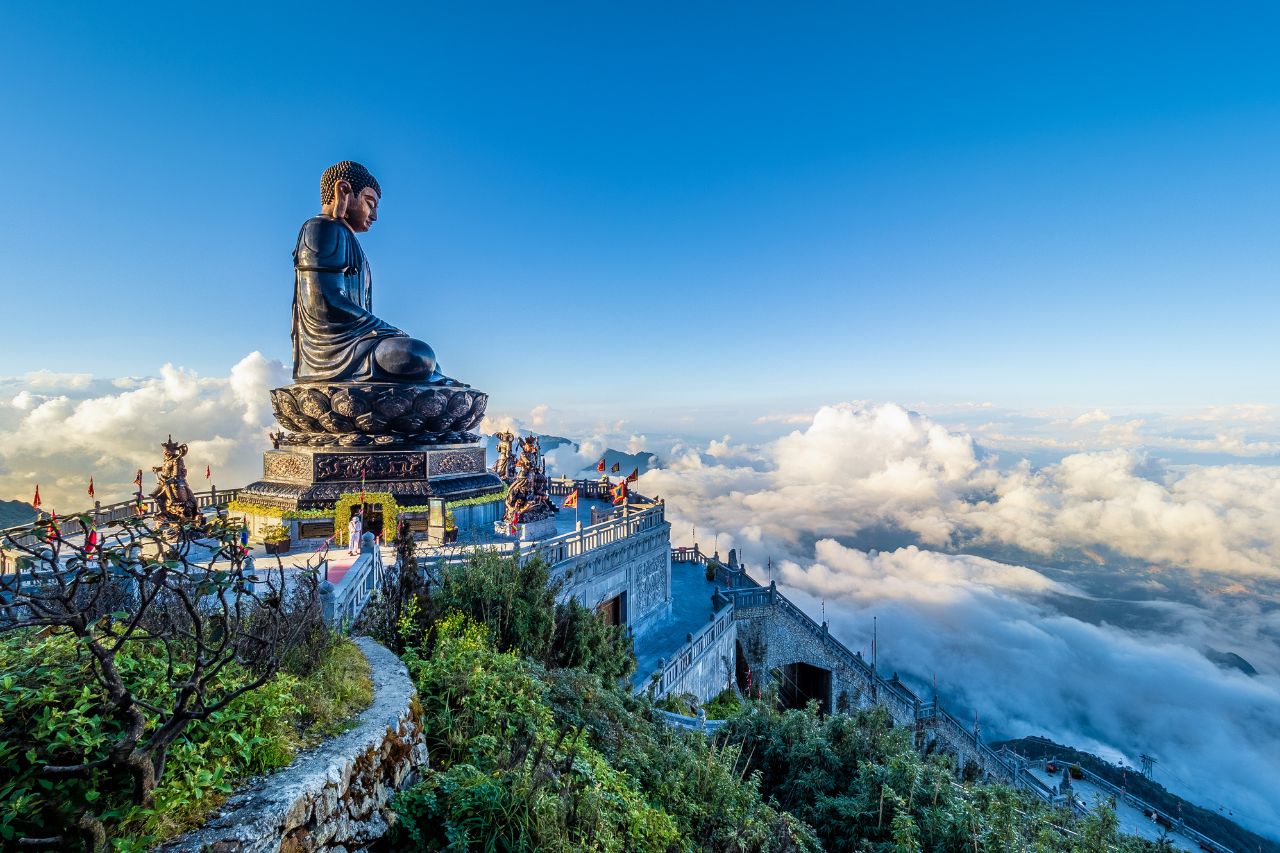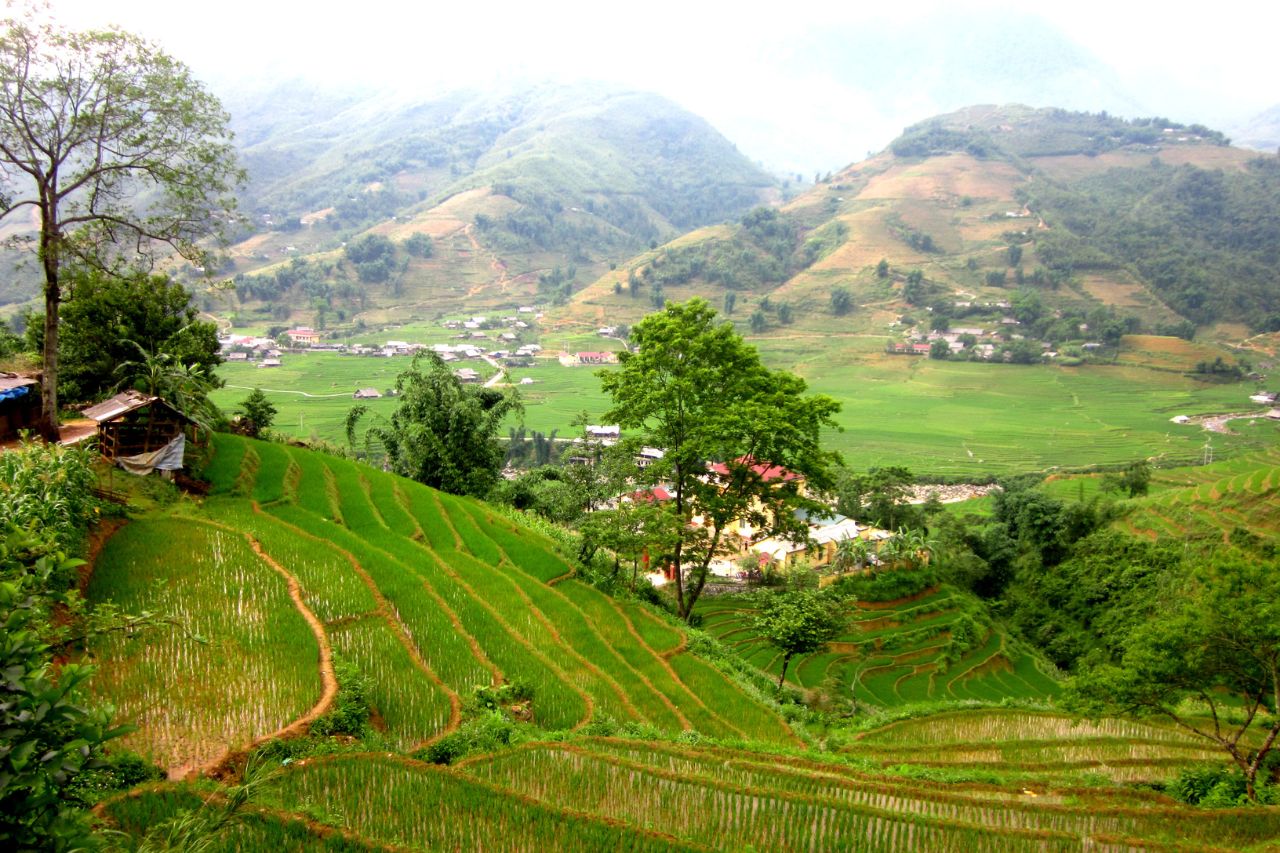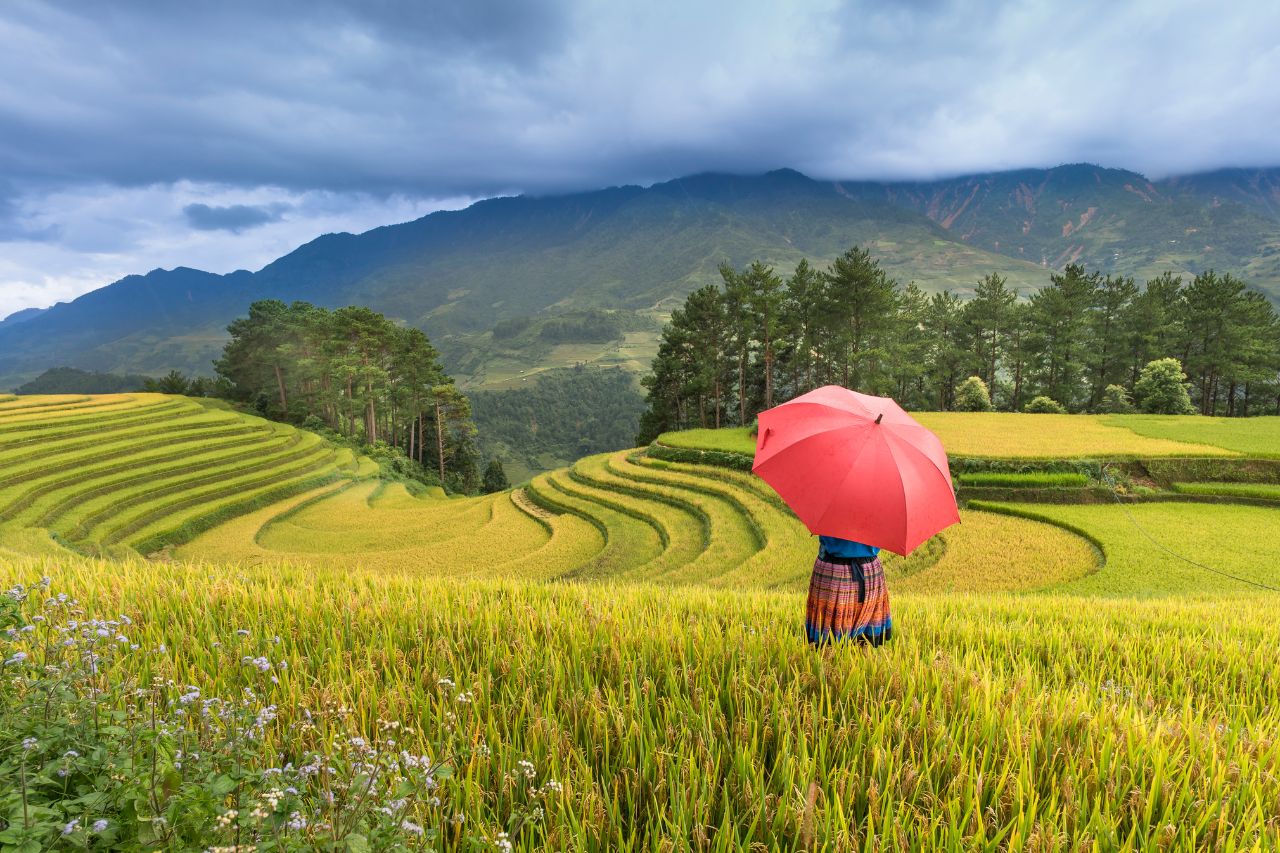Nestled in the misty mountains of northern Vietnam, Sapa is a captivating destination known for its breathtaking scenery, rich cultural tapestry, and adventurous spirit. Whether you’re a nature lover, a cultural explorer, or just seeking a quiet escape, Sapa offers something unique for everyone. This comprehensive guide will walk you through the top things to do and see in Sapa, where to stay, what to eat, and how to make the most of your visit.
📍 Where is Sapa?
Sapa is a small town located in Lào Cai Province, approximately 320 km northwest of Hanoi. Set at an elevation of 1,500 meters above sea level in the Hoàng Liên Son Mountains, it boasts cool weather, dramatic rice terraces, and colorful ethnic diversity.

🗺️ How to Get to Sapa
- By train: Take an overnight train from Hanoi to Lao Cai, followed by a one-hour car ride to Sapa.
- By bus or limousine: Several companies offer direct routes from Hanoi to Sapa (5–6 hours).
- By motorbike: For the adventurous, riding from Hanoi to Sapa offers an unforgettable experience.
📌Things To Do And See in Sapa
Nestled in the misty mountains of northern Vietnam, Sapa Town is a captivating destination known for its breathtaking scenery, rich cultural tapestry, and adventurous spirit. Whether you’re a nature lover, a cultural explorer, or just seeking a quiet escape, Sapa offers something unique for everyone. This comprehensive guide will walk you through the top things to do and see in Sapa.
🌾 Must-See Attractions in Sapa
Tucked away in the misty highlands of northwest Vietnam, Sapa is a charming mountain town famed for its dramatic rice terraces, ethnic diversity, and cool climate. Whether you’re seeking cultural encounters, breathtaking landscapes, or adventurous treks, Sapa offers a unique blend of experiences that captivate every traveler. Here’s your complete guide to the best things see in Sapa.
🏞️ Fansipan Mountain (The Roof of Indochina)

Standing tall at 3,143 meters, Fansipan is the highest peak in Indochina. You can reach the summit via:
-
Cable car: A fast, scenic option from Muong Hoa Valley.
-
Trekking: For seasoned hikers, a guided trek takes 2–3 days and offers rewarding views.
🌉 Golden Bridge & Fansipan Legend
Once you arrive by cable car, explore the Sun World Fansipan Legend complex, featuring a majestic Buddha statue, pagodas, and the iconic Golden Bridge, which offers panoramic views over the clouds.
🌾 Muong Hoa Valley

One of the most picturesque valleys in Vietnam, Muong Hoa is a must-visit:
-
Ancient rock carvings
-
Rice terraces that change color with the seasons
-
Walking paths through ethnic minority villages
🛖 Cat Cat Village

Located just 2 km from Sapa town, Cat Cat is home to the Hmong people. Explore:
-
Traditional stilt houses
-
Local handicrafts
-
Waterfalls and flower gardens
🚶 Ta Phin Village

A cultural gem, Ta Phin Village is inhabited by the Red Dao ethnic group. Enjoy:
-
Herbal bath experiences
-
Authentic homestays
-
Traditional brocade weaving
🌉 O Quy Ho Pass

One of Vietnam’s highest mountain passes, O Quy Ho offers:
-
Breathtaking views
-
Ideal spots for photography
-
Romantic sunset vistas
🌄 Ham Rong Mountain
Climb Ham Rong right from the center of Sapa for:
-
Flower gardens
-
Stone sculptures
-
A panoramic view of Sapa Town
🏛️ Sapa Church

Built during the French colonial era, this stone church in the town center is:
-
A local landmark
-
The site of weekend ethnic markets and cultural performances
🧗 Top Activities in Sapa

🥾 Trekking Through Rice Terraces
Trekking is Sapa’s top activity. Popular trekking routes include:
-
Lao Chai – Ta Van
-
Sin Chai – Y Linh Ho
-
Ban Ho – Nam Cang
You’ll pass through rice fields, meet locals, and stay overnight in cozy village homestays.
🐎 Ethnic Market Visits

If your trip aligns with a market day, don’t miss:
-
Bac Ha Market (Sunday): Best known for ethnic diversity.
-
Coc Ly Market (Tuesday): Smaller, authentic atmosphere.
-
Can Cau Market (Saturday): Set against scenic backdrops.
🚴 Cycling Adventures
Mountain biking is growing in popularity. Suggested trails:
-
Sapa – Ta Van – Ban Ho
-
Sapa – O Quy Ho Pass
-
Sapa – Silver Waterfall
🧘 Herbal Bath & Wellness
Unwind with a Red Dao herbal bath, famous for:
-
Natural healing herbs
-
Detoxifying effects
-
Relaxation after a long trek
📸 Photography & Drone Shots

With ever-changing mists, golden fields, and mountain peaks, Sapa is a dream for photographers.
🛎️ Where to Stay in Sapa
🏨 Hotels in Sapa Town
- Silk Path Grand Sapa Resort & Spa: Elegant and luxurious
- BB Hotel Sapa: Right in the town center
- Sapa Highland Resort & Spa: Ideal for families
🌿 Eco-Lodges & Nature Retreats
- Topas Ecolodge: World-renowned, sustainable, mountaintop views
- Sapa Clay House – Mountain Retreat: Unique, earth-built rooms
- Sapa Eco-Home: Great for longer stays
🛍️ Authentic Homestays
Stay with local families for a rich cultural experience:
- Ta Van Village Homestay
- Red Dao House in Ta Phin
- Lao Chai Hmong Homestay
🍻 What to Eat in Sapa
🍜 Must-Try Dishes
- Thắng cố (horse meat stew): A highland delicacy
- Cá hồi Sapa (Sapa salmon): Often served in hotpots
- Cơm lam (bamboo sticky rice): Grilled over fire
- Lợn cắp nách (free-range pig): Roasted whole or grilled
🍢 Street Food & Snacks
- Grilled skewers
- Corn on the cob
- Sweet potatoes
- Black beans with sticky rice
🍷 Local Specialties
- Apple wine
- Corn wine (rượu ngô)
- Herbal tea from Red Dao recipes
🍽️ Best Restaurants & Cafés
- The Hill Station Signature Restaurant
- Good Morning View Restaurant
- Moment Romantic Restaurant
- Fansipan Terrace Café (Great coffee with views)
🛒 Shopping in Sapa
- Brocade products: Bags, scarves, and clothes
- Silver jewelry: Handmade by the Hmong
- Herbal medicine: Red Dao herbs for baths
- Local honey & tea
Tip: Bargaining is common in local markets.
🛋️ When to Visit Sapa?
| Season | Highlights |
|---|---|
| 🌸 Spring (Mar-May) | Flowers bloom, mild weather |
| 🌾 Summer (Jun-Aug) | Lush green terraces, rain expected |
| 🍂 Autumn (Sep-Nov) | Golden rice fields, best trekking season |
| ❄️ Winter (Dec-Feb) | Cold, foggy, sometimes snow |
🛍️ Suggested Sapa Itineraries

⏳ 2-Day Itinerary
Day 1: Hanoi – Sapa – Cat Cat Village – Ham Rong Mountain
Day 2: Fansipan Legend – Muong Hoa Valley – Back to Hanoi
⏳ 3-Day Itinerary
Day 1: Hanoi – Sapa – Cat Cat – Night market
Day 2: Fansipan Cable Car – Ta Phin – Red Dao bath
Day 3: Lao Chai – Ta Van trek – O Quy Ho Pass
⏳ 4–5 Day Adventure
- In-depth trekking to remote villages
- Overnight in homestays
- Visit weekend markets like Bac Ha or Coc Ly
- Optional bike tour or herbal wellness day
📝 Travel Tips for Sapa
🧵 What to Pack
- Warm clothes (especially in winter)
- Waterproof trekking shoes
- Sunscreen and hat for summer
- Cash (ATMs limited outside town)
- Camera and drone for photos
🤝 Cultural Etiquette
- Ask permission before taking photos
- Dress modestly in villages
- Support local artisans by buying directly from them
- Avoid giving money or candy to children
🚗 Transportation in Sapa
- Motorbike rentals: ~150,000 VND/day
- Private car with driver: Ideal for groups
- Walking: Best way to explore nearby areas
🧑🧭 Local Guides
Hiring a local guide helps with:
- Cultural interpretation
- Language barrier
- Navigation through trekking paths
🌍 Responsible Travel in Sapa
- Choose eco-friendly accommodations
- Bring reusable bottles and reduce plastic waste
- Avoid animal-based souvenirs
- Respect ethnic cultures and traditions
🧱 Why Sapa Captivates Every Traveler
Sapa is not just a destination — it’s an experience. From sweeping mountain vistas and terraced rice fields to the warm hospitality of ethnic minorities and mouth-watering mountain cuisine, this region invites you to slow down and reconnect with nature and humanity.
So, whether you’re trekking among the clouds or sipping herbal tea with your homestay host, every moment in Sapa offers a story worth remembering.

